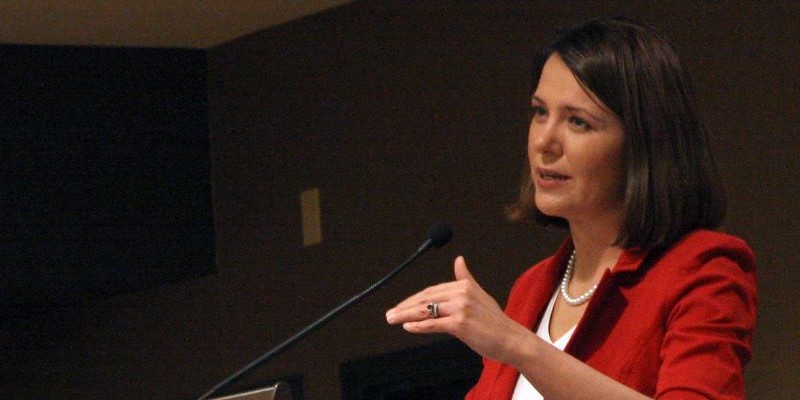Alberta government should set province on track to eliminate debt

It was two decades ago when Premier Ralph Klein held a “Paid in Full” sign high above his head. “Our debt is dead,” boomed a frontpage Calgary Herald article the next day. It could happen again. And sooner than you might expect.
In a few short weeks, Alberta will release its provincial budget for 2023—the first one from Premier Danielle Smith. New measures to address affordability, expand health-care capacity, and (of course) provide pre-election goodies may be on offer. And perhaps the government will reveal details and funding for its long-standing but controversial priorities including a provincial police force, separate pension plan and tax collection agency.
But beyond the immediate announcements, this budget can set the stage for some big questions around what to do with potentially massive windfall resource revenues. Despite recent oil price declines, such revenues will likely be massive for several years to come. While there are many options, one that should be at or near the top of government priorities is reducing provincial debt.
In a new paper published by the Fraser Institute, I estimate that if oil prices average $80 per barrel in coming years, then the province’s debt could be entirely eliminated once again by 2030—a mere seven years from now. The financial savings could be very large. I estimate that within a decade, more than $4 billion in interest costs are avoided annually, compared to a situation where debt remains at its current levels. In total, the cumulative savings could approach $20 billion by 2030; costs that Albertans are ultimately responsible for paying.
More importantly, lower provincial debt ensures the province is well-prepared for the next inevitable shock. Public debt is a shock absorber. It does (and should!) rise during challenging times. The alternative would involve tax increases or spending decreases at a time when neither would be helpful. But the flipside of this coin is equally important. When the fiscal times are good—as they are now—debt should be reduced. This logic is particularly important for Alberta. Our provincial budget is more volatile than most, so a better shock absorber is required.
Of course, there are risks to my projection. Oil prices are volatile and global economic conditions are uncertain. Over the past year, for example, oil prices (WTI $US) have ranged from more than $120 per barrel to nearly $70. Such swings have massive implications for the provincial budget. Roughly speaking, each $1 per barrel drop shrinks the provincial surplus by $600 million.
But even at lower prices, provincial revenues are substantial. At $75 per barrel, the province’s surplus for the coming year could be nearly $4 billion. At $85, it could potentially exceed $10 billion. Without deliberate planning and broad public support, however, these surpluses can be quickly spent away.
Today, for the fiscal time in many (many) years, Alberta government spending is roughly aligned with the other large provinces. Maintaining this position will be important for the province’s fiscal future.
I base my own estimates presuming that spending does not grow faster than inflation-plus-population growth. This mandate, given to the current UCP minister of finance, was also broadly the fiscal anchor of the previous NDP government. Such a goal therefore enjoys broad support.
To be clear, eliminating provincial debt is just one option, and there are opportunity costs. Public funds used to lower debt cannot be used for other priorities including decreased taxation or increased savings (either of these options would also be preferable to spending away the windfall). For instance, I am normally a strong supporter of increased savings. Resource revenues, after all, are not income in the normal sense. We’re simply converting a physical asset that we own (oil) into a financial one. By spending resource royalties, we deplete our wealth.
But for the first time in more than a decade, government borrowing rates exceed the expected return on investment savings. And given mounting global economic and geopolitical risks, the financial gain from lowering debt—in the form of lower interest payments—provides welcome certainty where financial investments do not.
Using windfall revenues to eliminate Alberta’s provincial debt is now worthy of serious consideration. It is also uniquely achievable. And Budget 2023 should set Alberta to do just that.
Author:
Subscribe to the Fraser Institute
Get the latest news from the Fraser Institute on the latest research studies, news and events.

